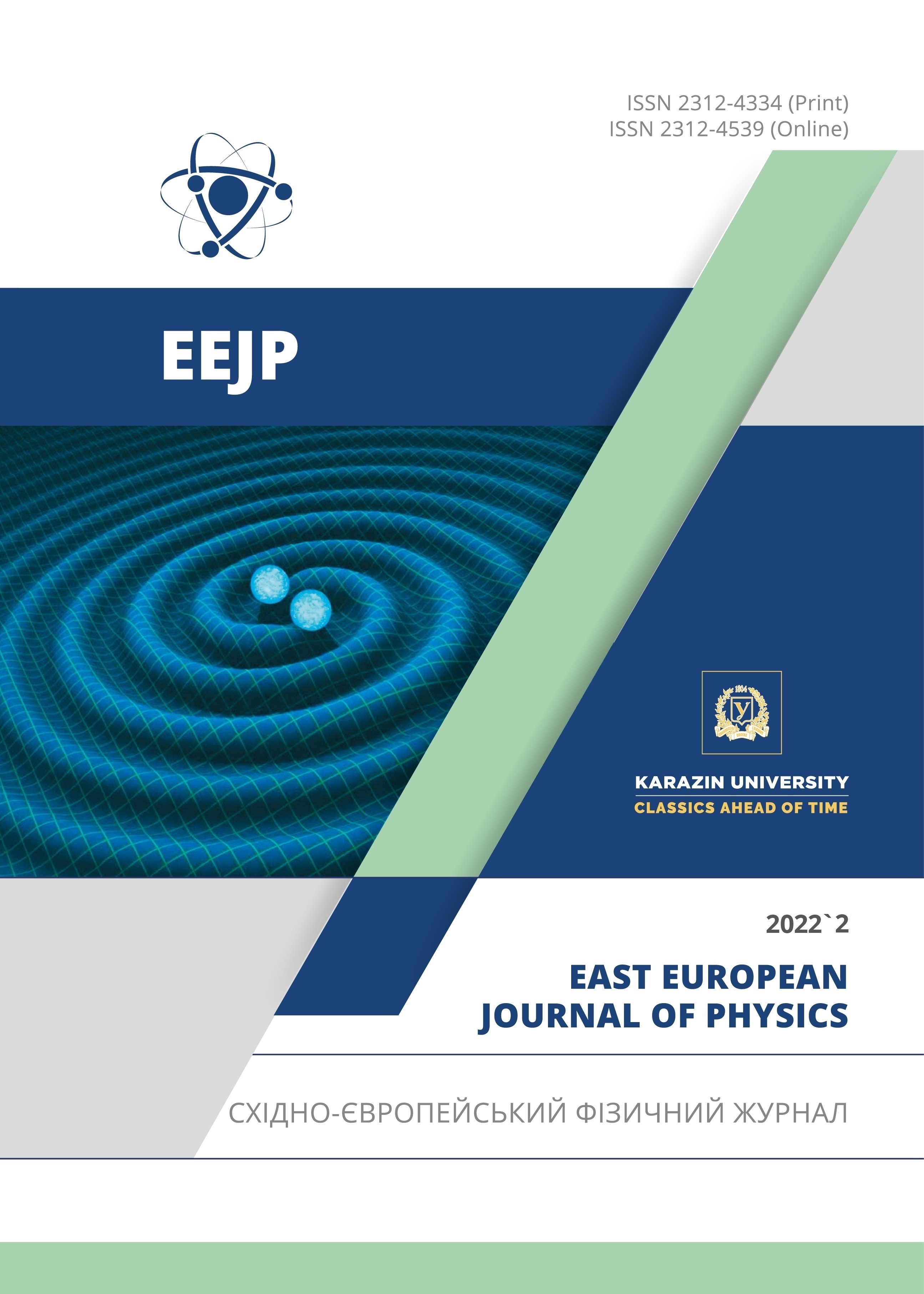General Analysis of the Reaction e^+ + e^- → N + Ñ + π^0
Abstract
The general analysis of the reaction , in the case of longitudinally polarized electron beam, has been performed in the one-photon-nnihilation approximation, accounting for the polarization states of the final nucleon. This analysis is useful for the description of the continuum (non-resonant) and resonant (with different possible vector mesons or excited baryons in the intermediate virtual states of the Feynman diagrams) contributions. The conservation of the hadron electromagnetic currents and P-invariance of the hadron electromagnetic interaction were used to express the matrix element in terms of the six complex independent invariant amplitudes. The general structure of the hadronic tensor for the case of unpolarized final hadrons and polarized nucleon has been derived. The spin-independent part of the hadronic tensor is determined by five structure functions and the spin-dependent one by 13 structure functions. The transversal, longitudinal and normal components of the nucleon polarization four-vector are expressed by means of the four-vectors of the particle momenta. The five independent invariant variables which describe the reaction have been introduced. The limits of the changing of these variables have been considered. The kinematical double invariant variables regions are given in the figure. The kinematics, suitable to study the invariant mass distributions, is investigated.
Downloads
References
Bing-Song Zou, arXiv:1801.098221v1 [hep-ph], https://doi.org/10.48550/arXiv.1801.09822
H. Li, BES Collaboration, H.C. Chiang, G.X. Peng, and B.S. Zou, Nucl. Phys. A675, 189 (2000), https://doi.org/10.1016/S0375-9474(00)00243-8.
BES Collaboration, B.S.Zou et al., Excited Nucleons and Hadronic Structure, in: Proc. of NSTAR 2000 Conference at JLab, edited by V.D. Burkert, L. Elouadrhiri, J.J. Kelly, and R.C. Minehart, (World Scientific, 2001), pp. 155, https://doi.org/10.1142/4591.
M. Ablikim et al. [BESIII Collaboration], Phys. Rev. Lett. 124, 042001 (2020), https://doi.org/10.1103/PhysRevLett.124.042001.
M. Ablikim et al. [BESIII], Phys. Lett. B814, 136110 (2021), https://doi.org/10.1016/j.physletb.2021.136110.
M. Ablikim et al. [BESIII], Phys. Lett. B817, 136328 (2021), https://doi.org/10.1016/j.physletb.2021.136328.
J. Haidenbauer, U. G.Meißner and L. Y. Dai, Phys. Rev. D103, 014028 (2021), https://doi.org/10.1103/PhysRevD.103.014028.
E. Tomasi-Gustafsson, A. Bianconi and S. Pacetti, Phys. Rev. C103, 035203 (2021), https://doi.org/10.1103/PhysRevC.103.035203.
Y. M. Bystritskiy, Phys. Rev. D103, 116029 (2021), https://doi.org/10.1103/PhysRevD.103.116029.
B.S. Zou, Nucl. Phys. A684, 330 (2001), https://doi.org/10.1016/S0375-9474(01)00433-X;
Nucl. Phys. A675, 167 (2000), https://doi.org/10.1103/PhysRevD.66.054020
D.M. Asner et al., Int. J. Mod. Phys. A, 24, S1 (2009) [arXiv:0809.1869 [hep-ex]], https://doi.org/10.48550/arXiv.0809.1869.
M. Ablikim et al. (BESIII Collaboration), Phys. Rev. D90, 032007 (2014), arXiv:1406.2486v1 [hep-ex], https://doi.org/10.1103/PhysRevD.90.032007
M. Ablikim et al., Phys.Lett. B771, arXiv:1701.04198v1 [hep-ex], https://doi.org/10.1016/j.physletb.2017.05.033.
J.P. Alexander et al. [CLEO Collaboration], Phys. Rev. D82, 092002 (2010), [arXiv:1007.2886 [hep-ex]], https://doi.org/10.1103/PhysRevD.82.092002
IHEP-Physics-Report-BESIII-2019-12-13, arXiv:1912.05983v1 [hep-ex], https://doi.org/10.48550/arXiv.1912.05893
S. Adler, Ann. Phys. 50, 189 (1968), https://doi.org/10.1016/0003-4916(68)90278-9
E. Byckling, and K. Kajantie, Particle Kinematics (Wiley, London, New York, Sydney, Toronto, 1973)
Copyright (c) 2022 Gennadiy I. Gakh, Mykhailo I. Konchatnij, Nikolay P. Merenkov, Egle Tomasi-Gustafsson

This work is licensed under a Creative Commons Attribution 4.0 International License.
Authors who publish with this journal agree to the following terms:
- Authors retain copyright and grant the journal right of first publication with the work simultaneously licensed under a Creative Commons Attribution License that allows others to share the work with an acknowledgment of the work's authorship and initial publication in this journal.
- Authors are able to enter into separate, additional contractual arrangements for the non-exclusive distribution of the journal's published version of the work (e.g., post it to an institutional repository or publish it in a book), with an acknowledgment of its initial publication in this journal.
- Authors are permitted and encouraged to post their work online (e.g., in institutional repositories or on their website) prior to and during the submission process, as it can lead to productive exchanges, as well as earlier and greater citation of published work (See The Effect of Open Access).








